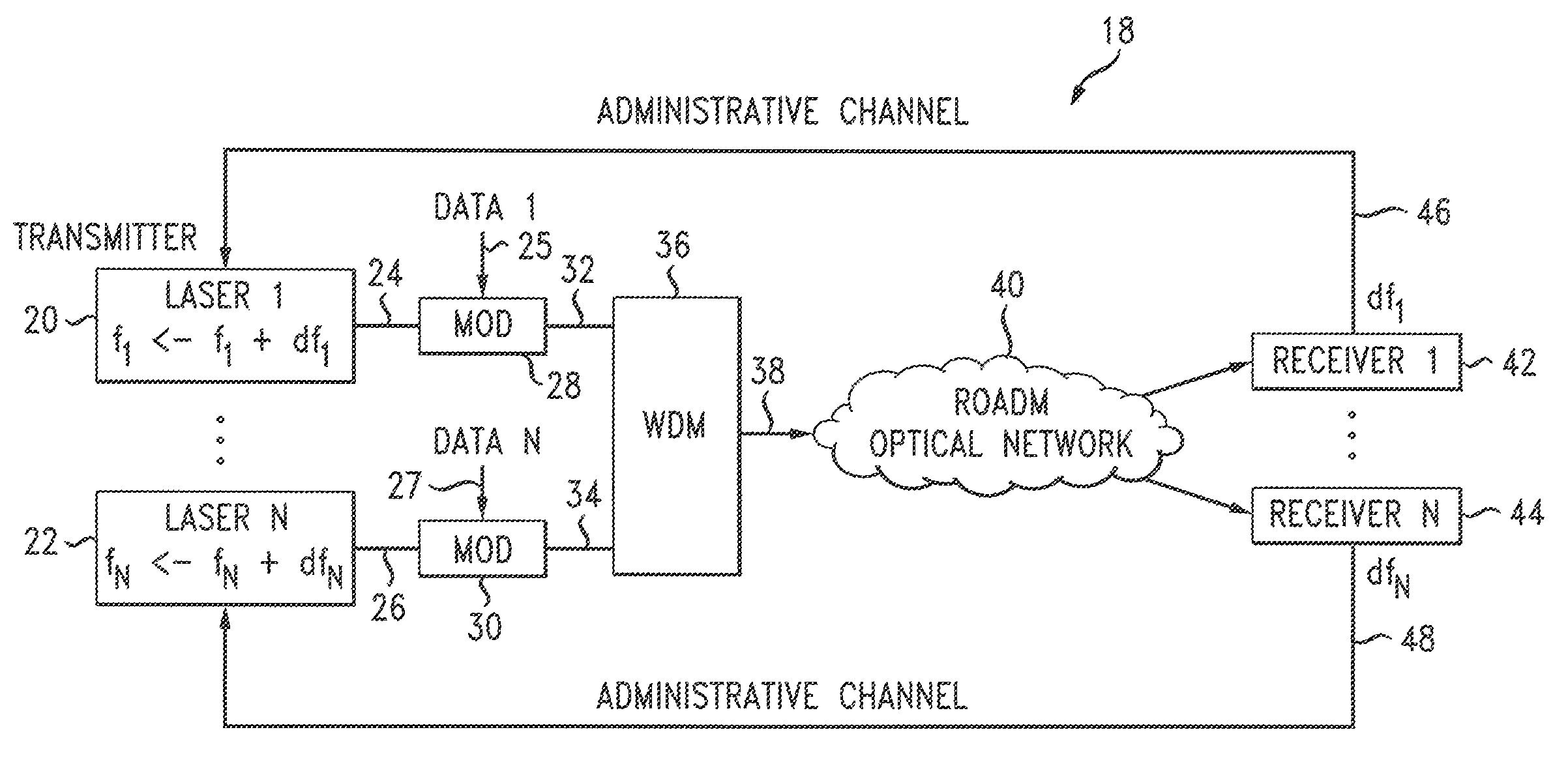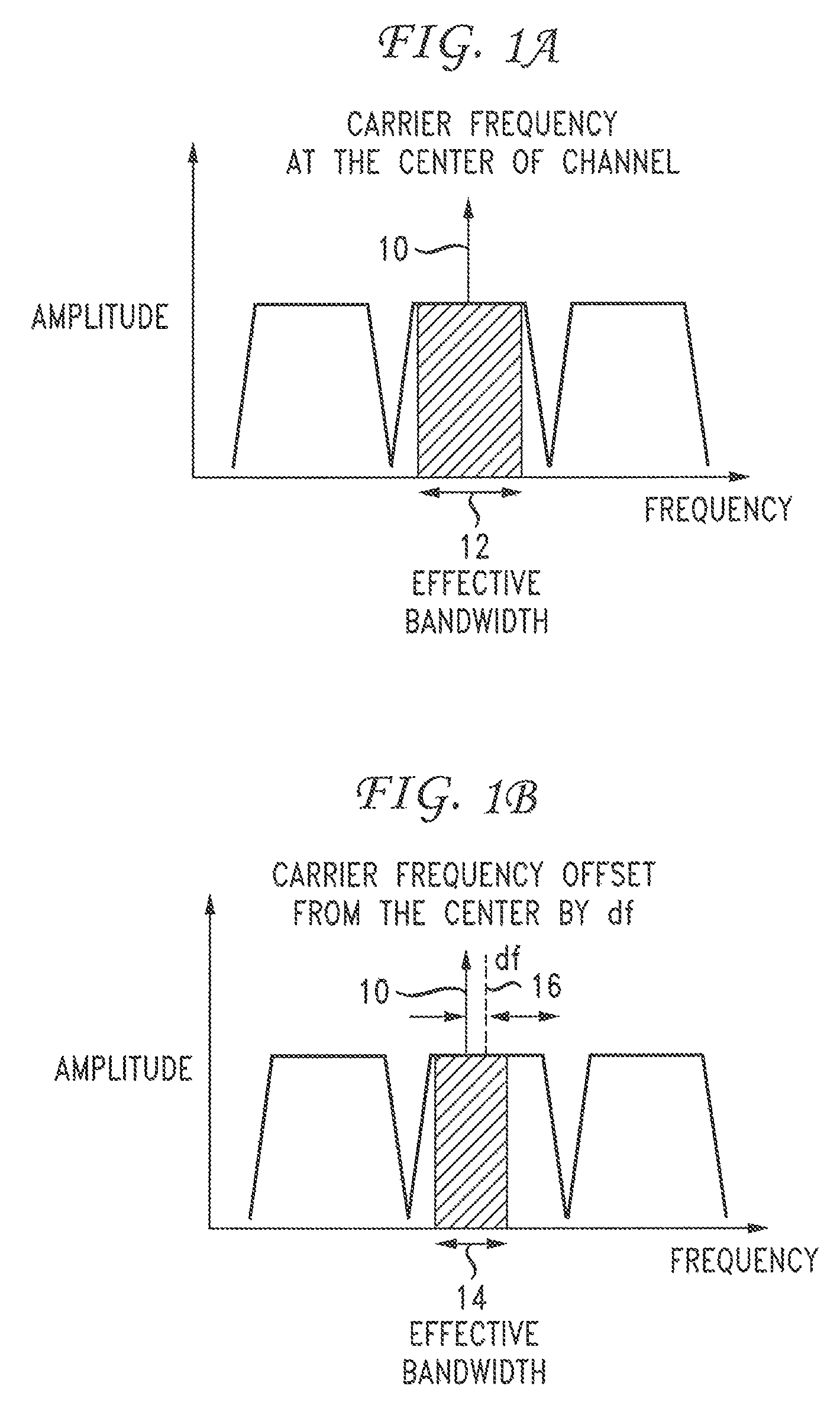End-to-end carrier frequency control to improve bandwidth utilization in an optical network
a carrier frequency control and optical network technology, applied in the field of optical networks, can solve the problem that carriers cannot know when or wher
- Summary
- Abstract
- Description
- Claims
- Application Information
AI Technical Summary
Benefits of technology
Problems solved by technology
Method used
Image
Examples
Embodiment Construction
[0019]Embodiments disclosed herein are directed to a method, apparatus, and computer-readable medium that provide end-to-end carrier frequency control to improve an effective channel bandwidth in an optical network using wavelength routing devices, such as optical reconfigurable add / drop multiplexers (ROADMs). Transmitter laser frequency is dynamically adjusted to achieve improved receiver performance by introducing an end-to-end automatic frequency control (AFC) loop, in which performance is monitored and sent back to a transmitter to enable adjustment of the transmitter laser frequency. The laser frequency is adjusted to be aligned to a center of a channel or sub-channel bandwidth. This end-to-end adaptive control of carrier frequency effectively reduces a bandwidth guard band allotted for each channel from several gigahertz (GHz) to tens or hundreds of megahertz (MHz). The result is a significant improvement in channel bandwidth utilization for high-speed transport systems, in wh...
PUM
 Login to View More
Login to View More Abstract
Description
Claims
Application Information
 Login to View More
Login to View More - R&D
- Intellectual Property
- Life Sciences
- Materials
- Tech Scout
- Unparalleled Data Quality
- Higher Quality Content
- 60% Fewer Hallucinations
Browse by: Latest US Patents, China's latest patents, Technical Efficacy Thesaurus, Application Domain, Technology Topic, Popular Technical Reports.
© 2025 PatSnap. All rights reserved.Legal|Privacy policy|Modern Slavery Act Transparency Statement|Sitemap|About US| Contact US: help@patsnap.com



